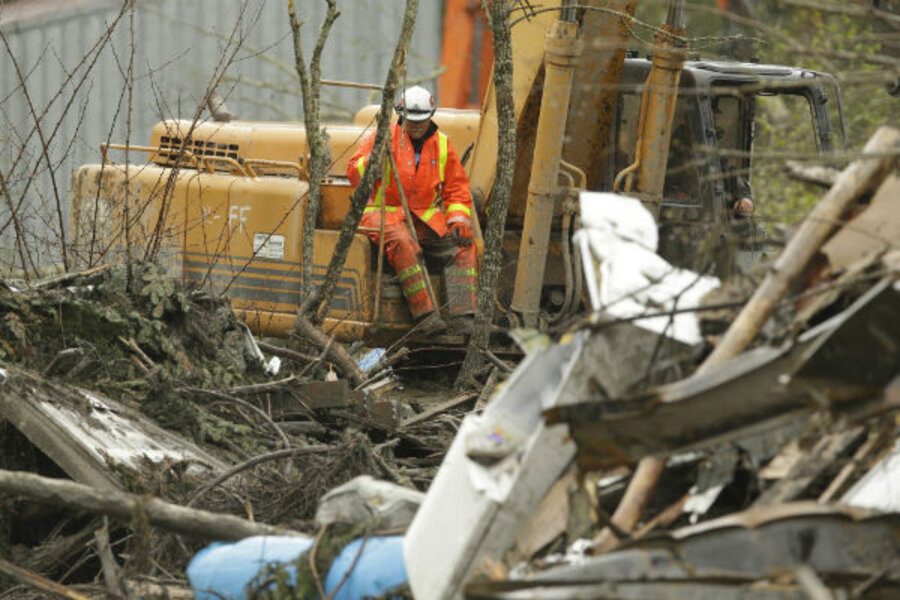When Obama visits mudslide area in Oso, Wash., what will he find?
Loading...
President Obama is scheduled to visit Oso, Wash., Tuesday afternoon, one month after a rain-soaked hillside collapsed and buried dozens of homes in mud and debris.
The president is expected to talk with first responders at the Oso Firehouse and with families of landslide victims at Oso Community Chapel.
A swampy wasteland of devastation awaits the president on his first visit to the devastated community 55 miles north of Seattle since the March 22 slide careened into the Stillaguamish River and buried homes in swampy muck.
Crews continue to find victims buried in the debris. Two more bodies were uncovered Monday, bringing the death toll to 41. At least two people are still missing.
"But he's not just going to see a mudslide. He's going to see mountains of volunteerism and mountains of compassion, and I think he'll get a good flavor of that talking to the citizens of the Stillaguamish Valley," Gov. Jay Inslee (D) told Seattle news station King5 Monday.
Community members have been working alongside local, state, and federal rescue crews since the slide hit, but search and recovery efforts have proved to be Herculean tasks.
A mile-long stretch of highway remains submerged in mud 25 feet deep. Heavy rains last week complicated the already-daunting task of wading through muck tangled with roots, branches, and household debris.
The US Army Corps of Engineers recently constructed a 2,000-foot-long earthen berm to separate the partially dammed river from the key search area. Last week, crews scrambled to extend the berm as heavy rains threatened to overwhelm the barrier with floodwater.
The state estimates that the economic toll could reach $53 million, The Wall Street Journal reports.
The US Department of Labor promised $2.8 million in grants to create temporary jobs to help with cleanup and recovery efforts Monday. The United Way of Snohomish County has raised $2 million for mudslide relief.
A woman who lost her husband in the slide filed the first claims against Washington State and Snohomish County on Friday, The Herald of Everett, Washington reports. She is seeking a total of $3.5 million and hopes that her suit will spur the government to answer questions about why the hill collapsed, her lawyer told the Herald.
Environmentalists and native American tribes have suggested that clear-cut logging may have played a role in the hillside’s failure, the Monitor reported last month.
A proposed timber sale near the site has been deferred by the state Department of Natural Resources while an additional review is conducted to determine potential risk to public safety.
One survivor, Robin Youngblood, who was rescued by helicopter after abandoning her home just before it was consumed in mud, hopes to talk with Mr. Obama about ensuring that residents are aware of the risks posed by landslides.
"People need to be given exact knowledge of whatever dangers they may be facing," Ms. Youngblood said. "Nobody should have been living there."
Days after the devastating slide, reports uncovered by The Seattle Times revealed engineers had warned that that particular segment of hillside was at risk for catastrophic failure and that it had collapsed several times before.
Youngblood may find a sympathetic ear with the president, but the authority over such development lies with local and state zoning boards and building departments, National Geographic reports.
"Local governments are between a rock and a hard place,” US Geological Survey geographer Lynn Highland told National Geographic. “They have responsibility to protect public safety. And they have pressure to build."






